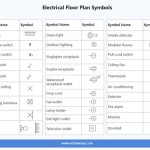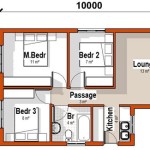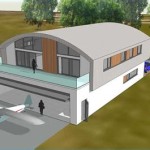```html
City of Edmonton House Plans: A Guide to Design and Development
The City of Edmonton, Alberta, presents a unique architectural landscape reflecting its history, climate, and diverse population. Navigating the process of creating house plans that comply with local regulations and construction standards is crucial for successful residential development. This article provides an overview of key considerations when developing house plans within the City of Edmonton.
House plans are more than just blueprints; they are comprehensive documents detailing the design, structure, and systems of a residential building. These plans serve as the foundation for construction, providing guidance for builders, contractors, and tradespeople. Accurate and complete house plans are essential for obtaining building permits, ensuring structural integrity, and achieving the desired aesthetic and functional outcomes.
The City of Edmonton has specific guidelines and regulations that govern the development and construction of residential properties. These regulations aim to ensure public safety, environmental protection, and neighbourhood compatibility. Understanding and adhering to these guidelines is a critical first step in the house plan development process.
Understanding Edmonton's Zoning Bylaws
Zoning bylaws are a fundamental aspect of Edmonton's urban planning framework. They define how land can be used and developed within the city. These bylaws dictate permitted land uses, building setbacks, height restrictions, and density requirements. Understanding the zoning designation of a proposed building site is paramount before commencing any design work.
Each zoning district has specific regulations that influence the design and dimensions of a house. For example, residential zones typically have requirements for minimum lot sizes, front yard setbacks, side yard setbacks, and rear yard setbacks. These setbacks determine how far a building must be from property lines, impacting the building's footprint and overall design.
Moreover, zoning bylaws often regulate building height. The maximum allowable building height can influence the number of stories and the roof design of a house. Developers must ensure their house plans comply with these height restrictions to avoid delays or rejection during the permit application process.
Density is another critical factor governed by zoning bylaws. Density refers to the number of dwelling units permitted per unit of land area. Zoning regulations specify the maximum density allowed in a particular zone, which may restrict the development of multi-unit dwellings or secondary suites within single-family homes.
Furthermore, zoning bylaws address matters such as parking requirements, landscaping regulations, and signage restrictions. These aspects can significantly impact the overall site design and the integration of the house into its surrounding environment. Consulting the City of Edmonton's zoning bylaw is essential to understand the specific requirements that apply to a particular property.
The City of Edmonton provides online tools and resources to assist developers in understanding zoning regulations. These resources include interactive zoning maps, detailed bylaw documents, and contact information for city planning officials who can provide guidance on specific zoning matters. Seeking clarification from city officials or experienced planning professionals can help avoid costly mistakes and ensure compliance with all applicable zoning requirements.
Navigating the Building Permit Process
Obtaining a building permit is a mandatory step for most residential construction projects in Edmonton. The building permit process ensures that proposed construction meets the minimum standards for safety, structural integrity, and energy efficiency. Submitting accurate and complete house plans is a critical component of the building permit application.
The building permit application typically requires detailed house plans that include architectural drawings, structural drawings, and mechanical drawings. Architectural drawings illustrate the building's exterior appearance, floor plans, elevations, and sections. Structural drawings specify the materials and construction techniques used for the building's foundation, walls, and roof.
Mechanical drawings depict the building's heating, ventilation, and air conditioning (HVAC) systems, plumbing systems, and electrical systems. These drawings must comply with the Alberta Building Code and the City of Edmonton's specific regulations. Furthermore, energy efficiency requirements are typically evaluated during the building permit process, ensuring that the proposed construction meets minimum energy performance standards.
The City of Edmonton's building permit process involves a review of the submitted house plans by city building officials. These officials assess the plans for compliance with the Alberta Building Code, zoning bylaws, and other applicable regulations. If the plans are deemed to be deficient or incomplete, the applicant will be notified of the required revisions.
Addressing any deficiencies promptly and accurately is essential to expedite the building permit approval process. The City of Edmonton offers various resources to assist applicants in preparing complete and compliant building permit applications. These resources include online checklists, informational guides, and access to building permit support staff.
The time required to obtain a building permit can vary depending on the complexity of the project and the volume of applications being processed by the city. It is advisable to submit the building permit application well in advance of the planned construction start date to allow sufficient time for review and approval. Failure to obtain a building permit before commencing construction can result in fines, stop-work orders, and other penalties.
Key Considerations for Sustainable House Design in Edmonton
Sustainable house design is becoming increasingly important in Edmonton, as homeowners and developers seek to reduce their environmental impact and lower operating costs. Incorporating sustainable design principles into house plans can result in energy-efficient, water-conserving, and environmentally responsible buildings.
Energy efficiency is a primary focus of sustainable house design. Strategies for improving energy efficiency include optimizing building orientation to maximize solar gain in winter and minimize solar heat gain in summer. Proper insulation of walls, roofs, and foundations is crucial for reducing heat loss and heat gain. High-performance windows and doors can also significantly improve energy efficiency.
The selection of energy-efficient appliances and mechanical systems is another important consideration. Energy Star-certified appliances and high-efficiency furnaces, air conditioners, and water heaters can reduce energy consumption and lower utility bills. Renewable energy systems, such as solar panels and geothermal heat pumps, can further reduce reliance on fossil fuels.
Water conservation is another key aspect of sustainable house design. Strategies for conserving water include installing low-flow toilets, showerheads, and faucets. Rainwater harvesting systems can collect rainwater for irrigation and other non-potable uses. Drought-tolerant landscaping can reduce the need for irrigation. Selecting durable and sustainable building materials is essential for minimizing environmental impact. Materials with recycled content, low volatile organic compound (VOC) emissions, and sustainable sourcing are preferred. Using locally sourced materials can reduce transportation costs and support the local economy.
Designing for durability and longevity is also important for sustainable house design. Buildings that are well-maintained and designed to withstand the local climate can last longer, reducing the need for frequent renovations or replacements. Proper ventilation and moisture management are crucial for preventing mold and rot, which can damage building materials and compromise indoor air quality.
The City of Edmonton offers incentives and programs to encourage sustainable building practices. These incentives may include rebates for energy-efficient appliances, financial assistance for renewable energy systems, and expedited permit processing for green building projects. Taking advantage of these incentives can help offset the costs of implementing sustainable design features.
Furthermore, consider the long-term operational costs of a house when making design decisions. While some sustainable design features may require a higher initial investment, they can result in significant cost savings over the life of the building. Conducting a life-cycle cost analysis can help evaluate the long-term economic benefits of different design options. The City of Edmonton is committed to promoting sustainable development and encourages homeowners and developers to incorporate sustainable design principles into their house plans.
Successful house plan development in Edmonton requires a comprehensive understanding of zoning bylaws, building permit requirements, and sustainable design principles. Engaging with qualified professionals, such as architects, engineers, and building consultants, can provide valuable expertise and guidance throughout the process. By carefully considering these factors, homeowners and developers can create house plans that are compliant, functional, and aesthetically pleasing, contributing to the growth and vibrancy of the Edmonton community.
```
Growth Management Monitoring And Ysis City Of Edmonton

Growth Management Monitoring And Ysis City Of Edmonton

Edmonton Outlines Future Development With New City District Plans Cbc News

How Efficient Is Your House Map Project Plans To Publish Ratings For All Calgary Edmonton Homes Cbc News

Development Compliance City Of Edmonton

Zoning Bylaw City Of Edmonton

District Planning City Of Edmonton

Urban Planning And Design City Of Edmonton

Zoning Overhaul Will Help Meet Growing Demand For Housing In Edmonton Developers Say Cbc News

Affordability Needs To Be Built In Edmonton S Infill Plans Expert Journal








